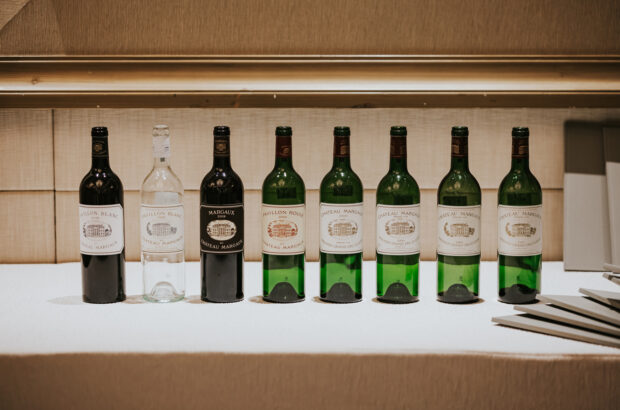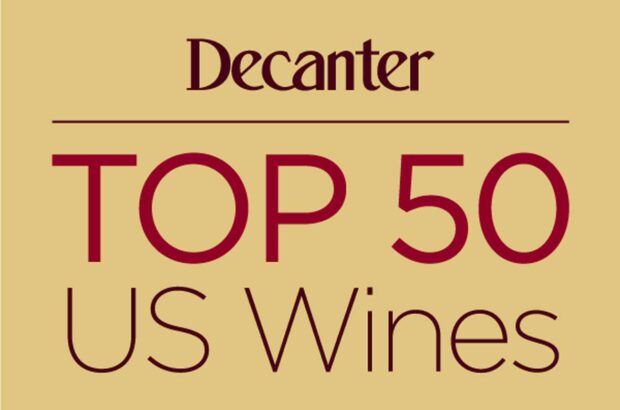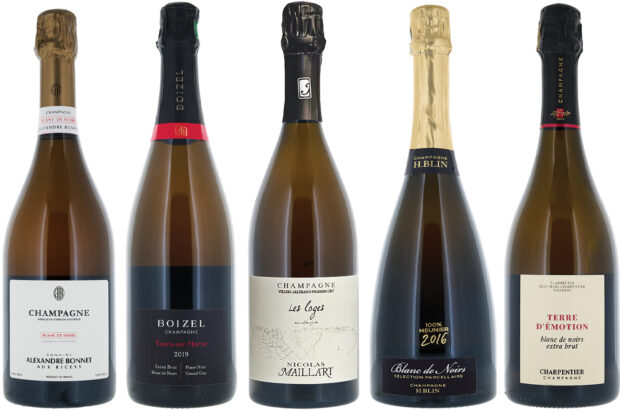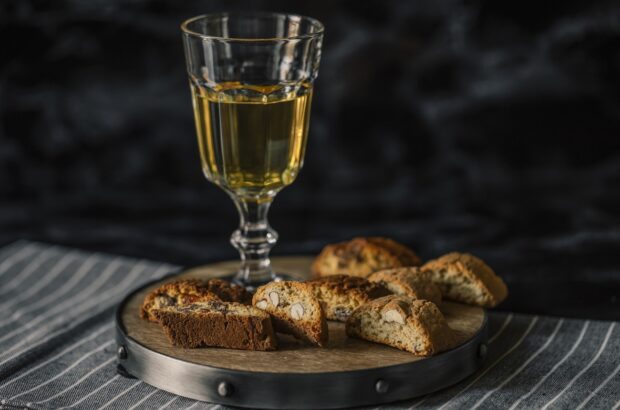Central-western Italy’s Lazio region has proved a late starter, but the current trend for small wineries bringing out the best in indigenous varieties is delivering impressive results, especially in the hills just south and east of the country’s capital.
Punchy and bold or elegant and smooth, the wines are perfect partners for the strong-flavoured local cuisine – dishes such as carbonara pasta, artichokes, porchetta and offal that feature regularly on menus throughout the capital from Piazza Navona and Campo de’ Fiori to the village-like Trastevere neighbourhood.
Lazio: wine facts
- Area planted 19,880ha – of which 11% is organic
- Annual production volume 1,290,000hl – of which 75% is white
- DOP 55%
- IGP 26%
Source: ISTAT 2018/I NUMERI DEL VINO
When in Rome: Nearby vineyards and wineries to visit

Credit: Decanter / Maggie Nelson
Nine vineyards and wineries to know:
- Vigna Barberini (urban vineyard project)
- Cincinnato
- Marco Carpineti
- Villa Simone
- Merumalia
- De Sanctis
- Tenuta di Fiorano
- Damiano Ciolli
- Gabriele Magno
Urban wine: The Vigna Barberini project
Wine was a fundamental part of life in ancient Rome and the empire contributed greatly to the spread of viticulture throughout Europe. Centuries later, vines were even grown at the city’s most ancient heart on the Palatine Hill, in gardens owned by Renaissance aristocrats. At Vigna Barberini, the only one to survive, nine rows of vines have once again been planted, joining the many olive trees and figs already here in the Colosseum archaeological park.
The variety chosen for the rejuvenated city vineyard is Bellone, a white enjoyed by Romans according to historian of the day Pliny the Elder, who mentioned it in his encyclopaedic writings. Giovanna Trisorio, of Cincinnato, the winery that’s part of the project, says, ‘We’re curious to see how the wine will turn out, as the terrain on the Palatine Hill is very different to our own volcanic soils.’
Head out to Cori
Established in 1947, Cincinnato is a wine cooperative that’s drastically different to those of yesteryear. Membership has been closed for two decades, grapes are paid for not by weight but according to 20 quality parameters, and considerable investments are made in equipment, experimentation and training for members. It’s located an hour’s drive southeast of Rome in Cori, a charming village built on terraces with cobbled lanes weaving up through pretty piazzas to the majestic columns of the Tempio di Ercole (late 2nd-century BC). The celebrated Gardens of Ninfa are 10km away, and the coast 35km.
‘We strongly believe in our local varieties, Bellone and Nero Buono di Cori,’ says Trisorio. Despite simplistic names, there’s nothing naive about the wines, Bellone making enticingly herby whites and Nero Buono intense ruby reds with chocolate and balsamic notes. At neighbouring winery Marco Carpineti, amphora versions are made from old vines of both varieties, served in artistic clay carafes. Full of ideas, the Carpineti family has also planted a vine maze, opening next spring along with other multi-sensory vineyard experiences.
Well-trodden path
Between Cori and the capital, the hills of Castelli Romani have drawn city dwellers in search of fresh air and genuine flavours since ancient times. It’s a fascinating area of Renaissance villas, lovely lakes and 16 characterful towns each with its own tasty speciality, including porchetta from Ariccia, and countless places to enjoy them, from roadside shacks to smart restaurants. For centuries, Romans have come here for supplies of the local wine that’s celebrated each October in Marino with the historic Sagra dell’Uva wine festival.
White wines have always dominated here, and the recent leap in quality of the traditional Malvasia-based blends is impressive, particularly for the two DOCGs: Frascati Superiore and late-harvest Cannellino di Frascati. As winemaker Lorenzo Costantini explains, ‘It’s partly thanks to a shift from neutral Malvasia di Candia to less productive but more structured and aromatic Malvasia del Lazio.’ Likewise, Trebbiano Toscano is being replaced by local Trebbiano Giallo and high-acid Ottonese (Bombino Bianco). ‘In the past, with the vast consumer market of Rome so near, such fertile land and regular sea breezes together with an old-fashioned cooperative culture, there was no impetus to improve quality,’ adds Constantini. Thankfully that’s changed.
Consultant winemaker for 22 producers while running his own Villa Simone winery, Costantini interprets diverse terroirs through producers’ individual visions, creating wines that vary greatly – but all displaying an elegance once rare in this area. ‘This whole territory was occupied by an enormous volcano; ancient lava flows and explosions have given us an incredible variety of soils,’ he explains. While work is underway to obtain MGAs (Menzioni Geografiche Aggiuntive, comparable to a lieu-dit-type vineyard location in France), a few historical Frascati Superiore crus already exist, including Villa Simone’s Vigneto Filonardi, and Vigneto La Torretta by Gabriele Magno from 50-year-old vines with three months’ ageing on lees. Magno, an airline pilot, is one of today’s many part-time producers, pouring energy and enthusiasm into his family estate in Grottaferrata, a town famous for its 11th-century Byzantine abbey.

Marco Carpineti.
Roman reds
Two wineries, both organic, that opt for Ottonese in their Frascati blends for a fresh, citrussy vibe are Merumalia and neighbour De Sanctis. Merumalia also offers accommodation just outside the town of Frascati itself, and is where the Fusco family makes a single-variety Ottonese, too. De Sanctis is the fruit of a passion for Cabernet Franc developed during Francesco De Sanctis’ winemaking studies in Friuli. The range here includes an excellent rosé and red. Near to Ciampino, just off the old Appian Way – which is pedestrianised on Sundays and lined with the remains of ancient monuments on the way into the city – the Tenuta di Fiorano estate, owned by the Boncompagni Ludovisi family, grows other international varieties. Its prestigious Cabernet Sauvignon-Merlot wine, Fiorano, was first made with input from Tancredi Biondi Santi in the 1950s.
When it comes to reds, the local hero is the Cesanese variety, protagonist of Lazio’s third DOCG, Cesanese del Piglio. The grape finds its ideal home in the clay and volcanic soils of the hills a little further to the east of Rome around three centres located on different sides of the same hill: Piglio, Affile (DOC) and Olevano Romano (DOC). The latter, an appealing medieval village much-loved by landscape artists, holds an annual Cesanese festival in late August.
Here, since taking over the family estate in 2001, Damiano Ciolli, with winemaker partner Letizia Rocchi, has honed his Cesanese to bring out the purest qualities that had sometimes been masked by power. Ciolli is a regular at meet-the-producer events in Rome, such as the early-December Festa del Cesanese at the Trapizzino Trastevere wine bar, which only ever serves Lazio labels – what better way to start exploring the local wine scene?
My perfect day in Rome: Where to eat and drink
Morning
Waking up under giant reproduction wine labels and finding eight of your favourite wines chilling in place of the minibar, you’d be forgiven for thinking you’re still dreaming, but no, this is par for the course at Hotel de’ Ricci.
Drag yourself away from such a paradise, stock up with pizza bianca, the local speciality focaccia, at Forno Campo de’ Fiori, and say arrivederci to Roma to hit the road, heading south for the Castelli Romani wine area just half an hour away.
Make your first stop at the Villa Simone winery near Monte Porzio Catone – in town there is an interesting wine museum that reopens in 2022 – to tap into the wisdom of local winemaker guru Lorenzo Costantini and try his wines.
Lunch & afternoon
From here it’s just five minutes to the hilltop town of Frascati, the main centre. Park in front of grand 16th-century Villa Aldobrandini and stroll through the historic centre to Osteria dell’Olmo for an informal lunch of porchetta and cheese served by colourful character Remigio.
In Castelli Romani you’re spoilt for choice with so many villas, villages and wineries to visit, so plan a return trip, but make time for the friendly Gabriele Magno winery at Grottaferrata.
Try the small range at the idyllic cellar ocation among the vines or at La Torretta villa surrounded by lush gardens.
Evening
Back on the road, pass scenic lake Albano to reach the charming hillside village of Cori, 45 minutes out to the southeast, the perfect place to stretch your legs and work up an appetite.
Wander under arches, up steps and past frescoed churches to reach the site of the ancient Roman Tempio di Ercole, with its striking columns and wide-open views.
Back down the hill, check in at the Cincinnato Wine Resort for a delicious dinner with the winery’s own olive oil and local-variety Bellone and Nero Buono wines before stretching out under the sheets against a bedhead made from wine barrels, with postcard-pretty views of Cori through the window.
You Rome address book
City: accommodation
Hotel de’ Ricci
This wine-themed hotel is handily located near Campo de’ Fiori and is an easy walk from the central sights, the Trastevere district and the Vatican. Each of the eight rooms has a personalised supply of wine and access to a list served via Coravin, with regular producer events, all-day meals and a prestigious cellar shared with top seafood restaurant Pierluigi.
City: restaurants & bars
Ai Tre Scalini
An informal wine bar founded in 1895 in the animated Monti neighbourhood near the Colosseum. The decor is warm yellow and wood and daily wines are served by the glass with simple dishes like spicy coppiette salami, oxtail and gnocchi.
Armando al Pantheon
A traditional family-run trattoria with an all-Italian wine list – an ideal spot to try Roman classics including pajata (calf intestines) or rigaglie (chicken giblets) with pasta or the house speciality, duck in plum sauce.
Forno Campo de’ Fiori
This historic bakery on the corner of the busy marketplace piazza is good for simple and crispy pizza bianca, Rome’s favourite anytime snack; try the rossa version with tomato, too, and buy some moreish biscotti al vino.
Matricianella
A cosy place near the Spanish steps serving genuine versions of typical dishes such as abbacchio lamb in various ways. On the wine front, there is quality glassware and an extensive and informative list of labels at accessible prices.
Rimessa Roscioli
This wine lover’s wonderland offers a variety of formulas from tasting flights to tasting dinners, cookery classes, blind tastings and out-of-town wine tours. The Roscioli family also runs a popular deli-eatery, bakery and bar, all nearby.
Trapizzino Trastevere
Only wines from Lazio are served here, with two pages of the region’s top red, Cesanese, and a dedicated early-December festival. Come for a drink and a hearty bite – think pizza slabs with meatballs.
Southeast of the city
Cincinnato Wine Resort, Cori
A relaxing haven run by the Cincinnato winery in a beautifully converted farmhouse with simple, stylish bedrooms and lovely views of the hillside village of Cori. The restaurant (weekends only) serves fresh, imaginative dishes using local ingredients.
Osteria dell’Olmo, Frascati
Remigio serves his wine from the micro-cellar where it’s made, then crosses the tiny, picturesque piazza to prepare tasty bites such as porchetta, buffalo mozzarella or ricotta and olives presented in vintage kitchenware.
Taverna Mari, Grottaferrata
A welcoming restaurant with a terracotta colour-scheme, open fire and beamed ceiling plus two spacious terraces. Come for traditional dishes including home-made bucatini all’amatriciana and a good choice of wines, many local.
Getting there
Fiumicino airport, to the southwest of Rome, has direct trains to Termini station (30 mins), while Ciampino airport is 15km southeast of the city. Frascati town lies about 20km to the southeast, and Cori 30km further in the same direction.












